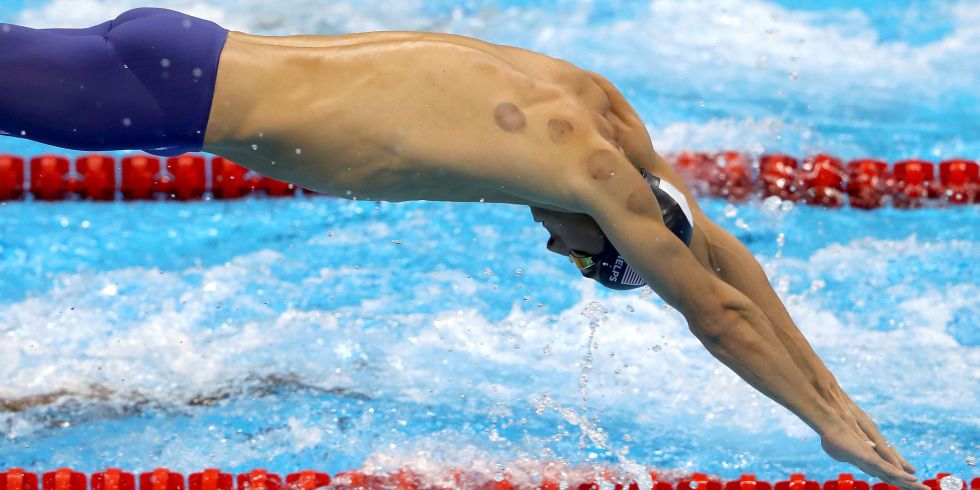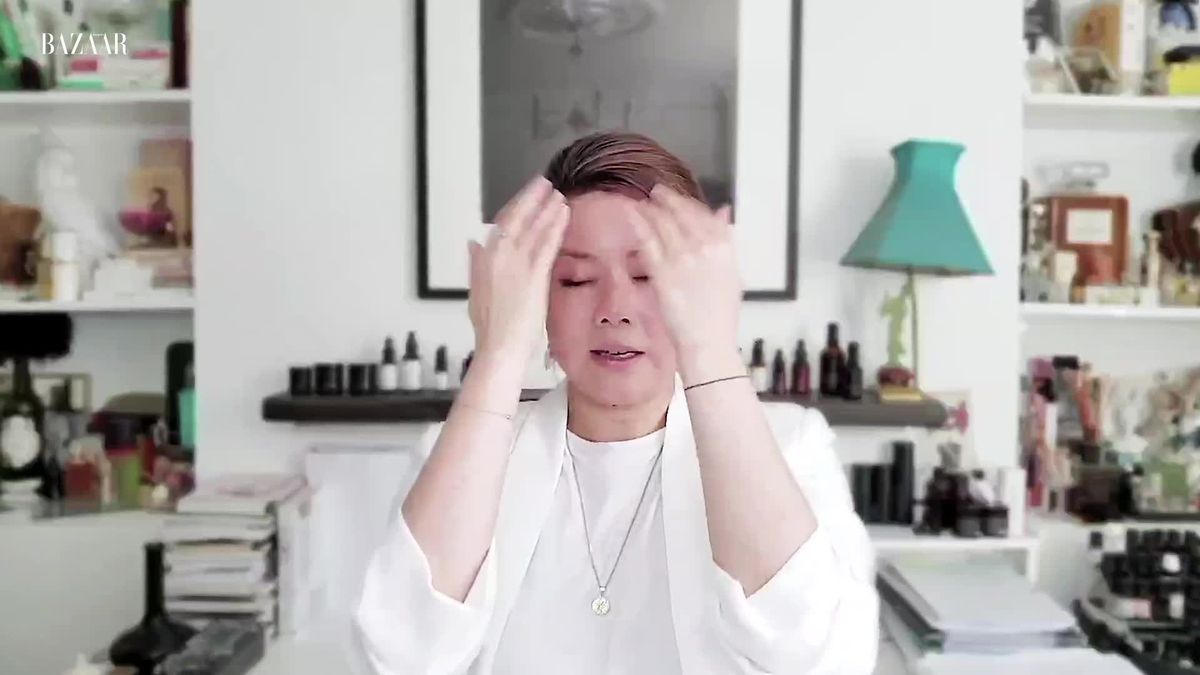Recent swimming competitions have captivated viewers of the Paris Olympics, with the eagle-eyed spotting dark circles on many of the pro-athlete’s bodies diving into the pools.
The marks are a result of cupping therapy – also famously seen on Michael Phelps during the Rio Olympics in 2016 (where he collected his 19th of 23 gold medal) – and on countless A-listers across modern red carpet history; most memorably Gwyneth Paltrow, who was photographed with similar welts on her shoulders back in 2004. So, why does the treatment appeal to athletes and wellness enthusiasts alike?
Cupping is the technique traced back to ancient Chinese, Middle Eastern and Egyptian cultures which helps to stimulate blood flow in the body. It's practiced as an alternative medicine therapy whereby specialised cups are suctioned to the body with heat and air to increase muscular blood flow, thereby minimising soreness and swelling and aiding healing.
As The New York Times reports, there's not a tremendous amount of research backing up the validity of the treatment, but many who've had cupping therapy done swear by it – and share it (see the TikTok videos tagged #cupping, currently amassing 2.1 billion views, for evidence).
The principles of cupping therapy
“The essential physiological principle for cupping is that it stimulates the release of nitric oxide enhancing blood circulation, drawing blood to the surface leading to an increase of blood flowing to the local area,” explains integrative medicine practitioner and founder of 001 Skin Ada Ooi. “This process can relieve muscle tension, and promote cell repair and the formation of new connective tissues and blood vessels. It can also help reduce inflammation and improve local anaerobic metabolism,” she says. “While it is great for exercise, we also use it a lot for recovery after immediate musculoskeletal trauma. For pain that elongates even after the injury is healed, we use cupping to help loosen the scar tissue in order to increase mobility and reduce pain.”
The wellbeing benefits of cupping
Not an athlete or injured? Cupping boasts wellbeing benefits regardless, Ooi says. “It induces a mild, artificial inflammatory response with the localised suction, which can in turn stimulate the immune system by activating immune cells including macrophages and lymphocytes, responsible for defending the body from pathogens and facilitating repair. Repetition of this cycle prompts our immune system to respond and strengthen.”
Cupping also stimulates lymphatic drainage, she explains, “as it promotes the body to move stagnated and excessive fluids and waste with a heighten speed – while this helps with wellbeing, it also helps sculpt body contour”. The reverse pressure from cupping can, too, loosen up fat deposits under the skin, she explains, as well as help stretch and ease the fascia (connective tissue) that binds the skin to the muscles; “these actions all help smooth out the dimpled appearance characteristics of cellulite”.
Another reason many rate cupping therapy is for stress-relief, Ooi adds. “In Chinese Medicine, there are 12 principle meridians that run along the body and they are all related to bodily organ and function systems. For example, the bladder meridian runs along the back and is involved in regulating the autonomic nervous system. Cupping along this meridian can help balance the sympathetic and parasympathetic responses to reduce stress and anxiety.”
The types and process of cupping therapy
There are different types of cupping, the therapist explains, “including using glass whereby the suction is usually created by fire, and plastic where the suction is created by a manual or mechanical pump.” ‘Glide cupping’ is where the suction is created and the cup is glided along the body, whereas ‘static cupping’ is where the cups are being left on the body, she continues. “The depth and the duration of the cupping motions are the key for efficacy of the treatment – and only a specialist would be able to perform whatever suits for purpose.”
In general, the treatment only lasts a few minutes, which is just enough time for surface capillaries to break – sometimes resulting in the physical markings (but not always). “Not all cupping treatments contribute to dark circles or bruises on the skin,” she explains. “Glide cupping usually doesn’t leave marks, but static cupping can leave dark circles for a day to a week.” Regardless of marking or not, it shouldn’t be a painful experience, and the immediate effect is one of relaxation; like having an intense deep tissue massage.
At-home cupping therapy
Naturally, you want to see a specialist professional for cupping therapy “to avoid over-cell activation that might make any inflammation worse or contribute to further ailments,” Ooi warns. But, that said, there are many home-use cupping devices on the market now that she doesn’t disapprove of.
“They are good for relaxation or local muscle tension relief,” she says, “just make sure you don't leave the cups on for longer than 10 minutes at a time, and then keep the cupped areas warm, avoiding exposure to cold air”.
It’s a good idea to drink plenty of water following cupping therapy in order to give your lymph system a boost. It’s also normal to feel a little tired, or possibly even flu-like, as your body processes and eliminates the toxins released. If you can, “rest or nap after cupping to let the effects of heightened stimulation work through your body to get the most out of the therapy,” Ooi concludes.








